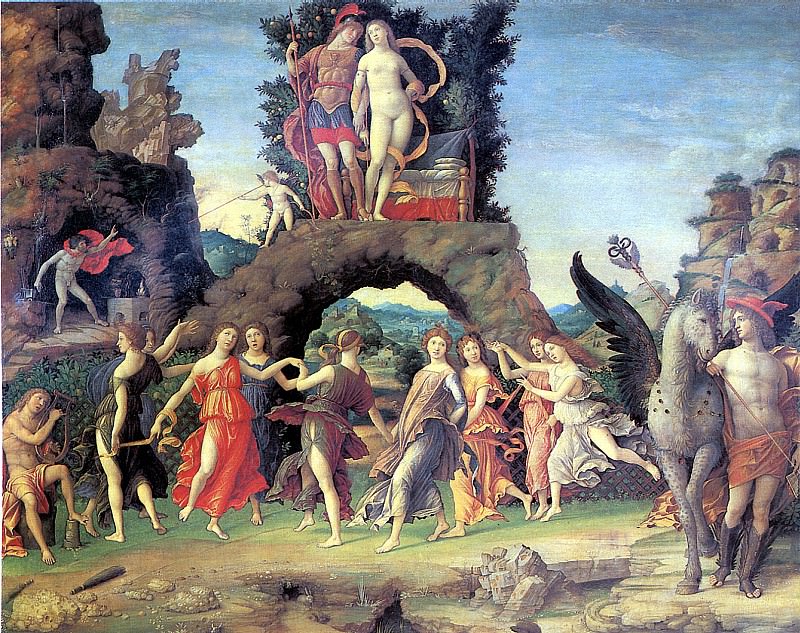ANDREA MANTENA – Mars and Venus, or Parnassus Louvre (Paris)
Louvre – ANDREA MANTENA - Mars and Venus, or Parnassus
Edit attribution
Download full size: 1615×1277 px (0,8 Mb)
Back to album: Louvre (Paris)
"Parnassus" is considered one of Mantegna’s finest paintings. The painting has been admired, argued about, and criticized. However, all the allegories and subtleties of this work have never been clarified. It was no surprise to anyone that Mantegna chose classical mythology for his canvas. Looking at the painting, the viewer immediately sees the Muses dancing. It is easy to recognize them - there are many of them.
Description of Andrea Mantegna’s painting Parnassus
"Parnassus" is considered one of Mantegna’s finest paintings. The painting has been admired, argued about, and criticized. However, all the allegories and subtleties of this work have never been clarified.
It was no surprise to anyone that Mantegna chose classical mythology for his canvas. Looking at the painting, the viewer immediately sees the Muses dancing. It is easy to recognize them - there are many of them. According to legend, it was believed that the song of the 9 Muses could cause cataclysms, which also included volcanic eruptions. Only a blow from the hoof of the horse, Pegasus, could stop the action of the songs. We can find him in the picture of Parnassus. He is on the right, winged, all studded with jewels, as if preparing to strike with his hoof.
Next to the Pegasus depicted, we can find Mercury, the god who, if the myths of antiquity are to be believed, promoted the future adultery that Venus had with Mars. He was assisted in this by Apollo. In the picture "Parnassus" we can also see Mars and Venus - they are located at the top of the picture. The artist depicted them on a stone pedestal. Nearby there is a tree with fruit, which is considered a symbol of fidelity, strong love. Nearby, the artist as if mocking, painted a bed. Hephaestus, the husband betrayed by Venus, tries to jump out of the forge. We can find Apollo below, he is holding a lyre in his hands.
In "Parnassus," Mantegna managed to bring the figures together with the landscape. The cliffs of the cliffs serve as the background on the canvas. The central arch shows us a perspective that moves away into picturesque places.
Mantegna would later maintain this approach of conveying the human figures. They will all be stocky, with strong arms and legs.
The canvas Parnassus abounds in allegories and symbolism. So far, many have not yet been able to unravel. The picture is interesting to researchers and its color language.
Кому понравилось
Пожалуйста, подождите
На эту операцию может потребоваться несколько секунд.
Информация появится в новом окне,
если открытие новых окон не запрещено в настройках вашего браузера.
You need to login
Для работы с коллекциями – пожалуйста, войдите в аккаунт (open in new window).




















You cannot comment Why?